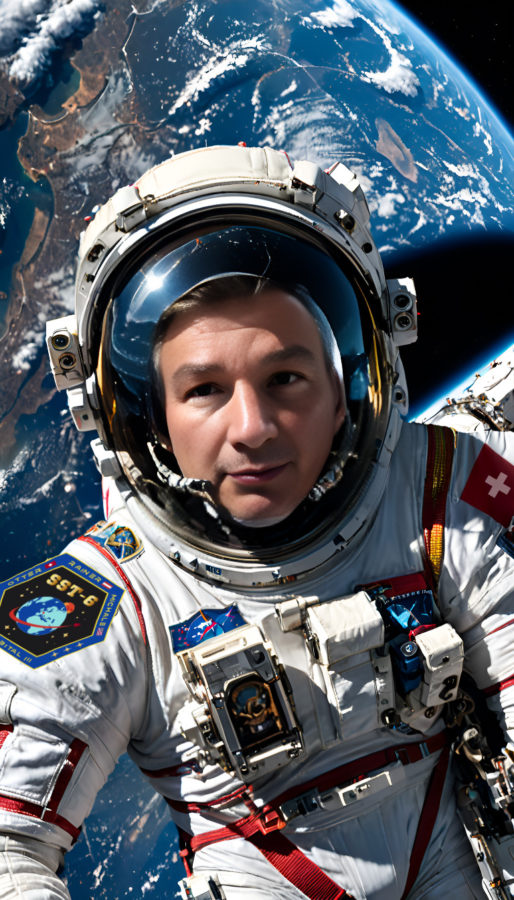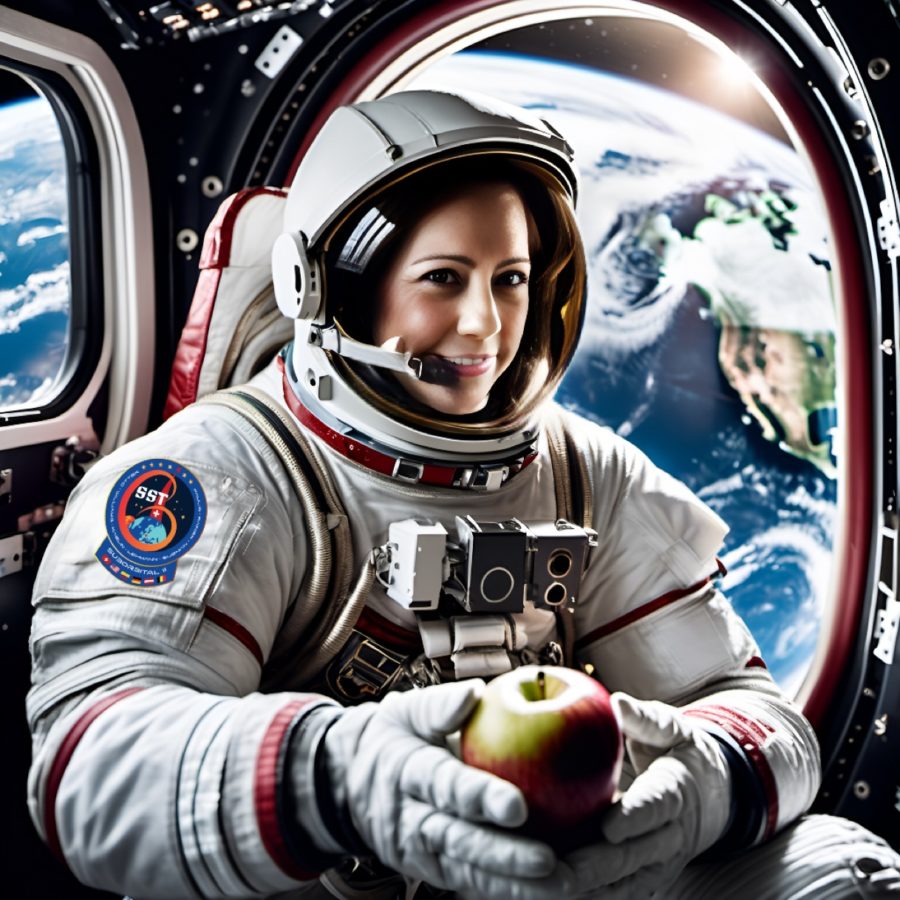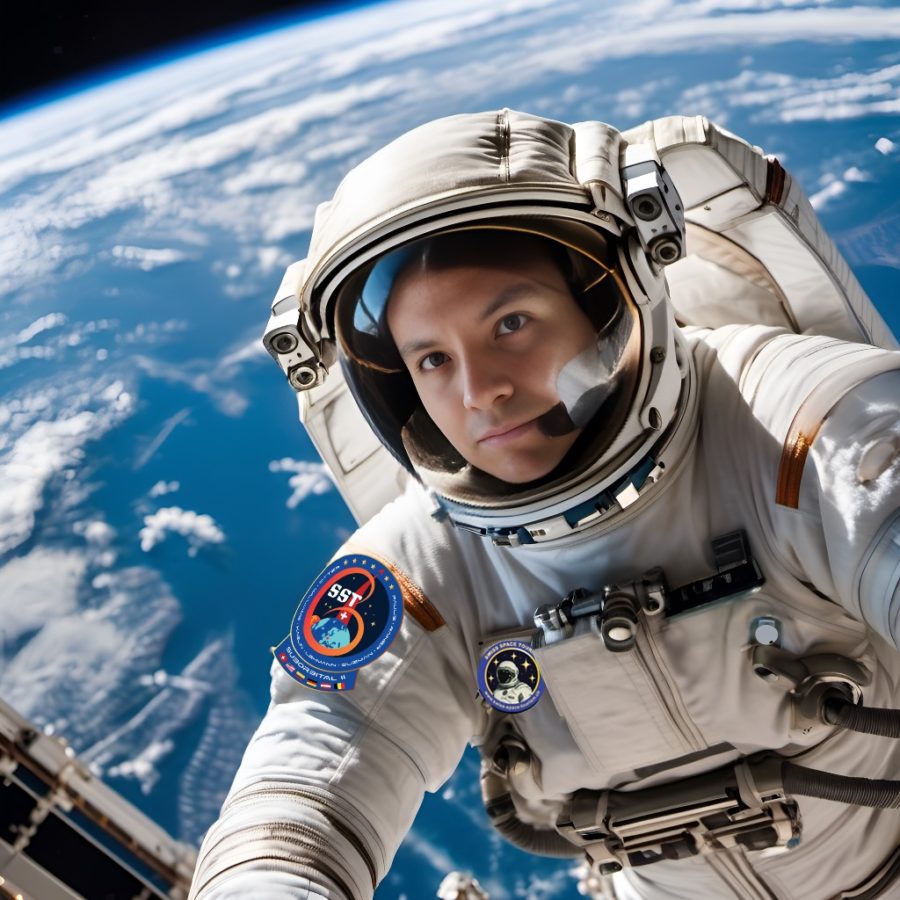
SPACE PROJECT SST-6 (Mission Suborbital II)
SPACE PROJECT SST-6 (Mission Suborbital II)
The Space Project SST-6 (Swiss Space Travelers-6) consists of the organization and realization of a suborbital flight, as part of a scientist, medical and educational program to pay more attention to Space and related sciences.
A total of 6 Crew Members will be presented to partners/sponsors/schools/universities/enterprises/companies/interested persons in order to be able to launch the Spaceship in 2025-2026.
The 1st seat will be occupied by the Mission Commander, Boris OTTER, who will supervise the various scientist, medical and educational experiments planned before, during and after the flight, such as the study of the symptoms linked to Space sickness, the impact of the Overview Effect on return to Earth, the effect of Weightlessness over a period of 3-4 minutes.
SST-6 CREW COMPOSITION (Mission Suborbital II).
1) Boris OTTER (SWITZERLAND).
Mission Commander, Space Project SST-6 (Mission Suborbital I & II).

And… Klaus RAINER (AUSTRIA), Backup of the Mission Commander, Space Project SST-6 (Mission Suborbital I & II).

2) Pierre-Emmanuel PAULIS (BELGIUM).
Copilot, Space Project SST-6 (Mission Suborbital II).

3) Patricia WILLIAMS (COLOMBIA – USA).
Mission Specialist 1, Space Project SST-6 (Mission Suborbital II).

4) Thomas “Alex” MCHALE (USA).
Mission Specialist 2, Space Project SST-6 (Mission Suborbital II).

5) Tanja LEHMANN (GERMANY).
Mission Specialist 3, Space Project SST-6 (Mission Suborbital II).

6) Enrique GUZMAN (BOLIVIA-SWITZERLAND).
Mission Specialist 4, Space Project SST-6 (Mission Suborbital II).

DESCRIPTION AND RULE OF THE CREW :
1) Boris OTTER, Mission Commander.
- Assumes the rule of Mission Commander, supervising scientist, medical and educational experiments before, during and after this SST-6 Mission.
- Trained as a civilian pilot (qualified on airplane, helicopter piston and turbine, seaplane, gyrocopter, 2 flights in Russian fighter planes Let-39 and Sukhoï-27 Flanker, 3 Private Cosmonaut Training sessions at the Gagarin Cosmonaut Training Center in Moscow, Aerobatic qualification (ACR), Night Flight (NF), Visual Flight Rules (VFR), Instrument Rating (IR), multi-engine piston (MEP), Airline Transport Pilot License “Frozen”, skydiving, paragliding, PADI Advanced Open Water Diver, glider.
- Very advanced professional experience in the field of Security and Rescue, essential for the human and scientist success of the mission : 7 years of experience as a volunteer Firefighter and 6 years as a Professional Firefighter by SIS Geneva (Switzerland).
- Popularization of Space experiences for educational purposes to international institutions, media, universities and schools.
- Federation of skills, Space and international experiences for humanitarian, scientist, medical and cultural purposes (International Crew with suitable profiles to achieve the objectives of the Missions).
Klaus RAINER, Backup of the Mission Commander.
Here is a little bio of Mr Klaus RAINER by himself :
“I was born in Klagenfurt/Austria in 1966. After school and vocational training, I joined the armed forces. I applied as a military pilot and after three years of training I became a military helicopter pilot and a flight instructor in 1992. My daughter Raffaela was also born during this time. In 2000 I moved to the largest air rescue company in Austria, the ÖAMTC Flugrettung, where I still work as an emergency pilot today. Not only physical fitness is an important part but also mental fitness. That’s why there’s also the musical side to sports, I play tenor saxophone, including 6 years in a big band. Jazz is a favorite genre of music of mine. I also find balance between my job and the missions on many motorcycle trips. Space, airfaring is a spectrum that has always fascinated me, which makes me all the more happy to be part of an enthusiastic family as an Active Member, namely the Swiss Space Project.
Some notes about my actual pilot work : Flying the intensive Transport helicopter near Vienna, called Wiener Neustadt, Callsign C33, C means Christophorus, we have 32 Helicopters, 75 Pilots, and 700 flying Doctors and Crewmembers, I hold the medical class one EASA, have 8886 Helicopter flight hours, 300 Fix Wing flight hours, I am rated for night mission with NVG Night Vision Googles, and over all I have 42.000 flight trips means start and landings. My duty time : one week on, one week off”.
2) Pierre-Emmanuel PAULIS, Mission Copilot.
He quickly became passionate about aviation and the conquest of space. He continued his artistic training at the École supérieure des arts Saint-Luc in Liège, illustration-comics section, from which he graduated in June 1988. He completed his course with the teaching aptitude certificate issued by the Institut Saint -Laurent in Liège in 1990. He entered professional life as a boarding school educator at the Collège Saint-Roch in Ferrières from 1990 to 1995, then he was a drawing professor and educator at the Institut du Sacré-Coeur in Barvaux-sur -Ourthe, and professor of drawing at the Notre-Dame Institute in Waremme. He launched the Tania comic book series, the first volume of which “Affaires occultes” was written by his neighbor Alain Mercier and published by Khani Éditions in 1997, followed by the second volume “Terre sur le Cap” which he produced alone for Coccinelle BD editions. in June 1999. A third volume “European Astronaut” was this time published by the European Space Agency in 2004, the fourth opus “Les Diamants de l’espace” was published by Euro Space Society in 2004 and the series was published in full in the “HZ-Horizon” collection at Éditions Joker in 2013.
In 2005, he responded to the call of the Belgian army and participated in the BDéfense collective, sold for the benefit of charitable works. In 2007, he paid tribute to François Walthéry in Natacheries published by BD Belge and he illustrated the work “Terre de France”: a story of 500 million years by Charles Frankel in the “Open Science” collection published by Parisian publisher Seuil. Since October 2009, Pierre-Emmanuel Paulis has been a seconded professor of Education at the Euro Space Society of Belgian astronaut Dirk Frimout, in charge of organizing and running Space Classes at the Euro Space Center from Transinne (Libin). In 2009, Pierre-Emmanuel Paulis participated in the creation of the Mars Society Belgium, of which he became President in 2014. He wrote two works around the Apollo program for ED2A editions in 2016 and 2019 and he published “Un Belge sur Mars” with the same publisher in 2017. He wrote the screenplay for the seventh volume of the series “Les Reportages de Lefranc: La Conquête de l’espace” drawn by Régric published by Casterman as well as that of the first volume of the series “Les Carnets de l’aventure entitled The Splashdown” for the designer André Taymans by Éditions du Tiroir in 2019.
Pierre-Emmanuel Paulis, President of the Mars Society Belgium and teacher at the Euro Space Center, is the guest of RTL Info 7 p.m. to give more details regarding the Artémis mission on September 3, 2022.
He also acts as a poster artist for events in the Hotton region.
He writes space columns in particular in Le Vif13, is a consultant for various media and gives conferences both in Belgium and abroad.
Pierre-Emmanuel PAULIS will be in charge of training the crew in survival systems, describing the Overview Effect and studying Space Sickness. He will be the Copilot and safety coordinator of the flight.
3) Patricia WILLIAMS, Mission Specialist 1.
Here is her amazing biography :
“Patricia Williams was born in Venezuela and raised in Bogota-Colombia. She moved to the United States in Florida in 2016 on the Space Coast and became very interested in the Space Exploration programs. She decided to share NASA content with Hispanic audiences and had the chance to interview astronauts and professionals working on space programs, creating a community with the same interest.
She is a school teacher with a bachelor’s degree in Modern Languages (English-Spanish) at La Salle University. She studied theoretical subjects to pursue a Master’s in International Affairs in Colombia at Externado University.
She volunteered at NASA Landslide Reporter, translating some procedures into Spanish, and had the chance to participate with NASA Social groups to witness the behind-the-scenes of multiple rocket launches at the Kennedy Space Center.
Former educator at Kennedy Space Center in space educational programs, currently volunteering with NASA as a Solar System Ambassador, having the opportunity to disseminate the space exploration program to all kinds of audiences, she is also an active member of Mars Society Belgium as a representative of USA.
She has completed training programs in Suborbital Space Flight and Altitude Awareness and Hypoxia ( Altitude Awareness and Hypoxia Training course, Nastar Center ) in a well-known aerospace training center in the USA where astronauts and military fighter pilots train and also attended an Advanced Adult Space Camp in Huntsville, Alabama. Currently, she is pursuing studies to obtain a Private Pilot Licence.
She is passionate about aerospace and looking forward to becoming the first Colombian teacher who witnesses the amazing darkness of space with Swiss Space Tourism to inspire the future generation of professionals to reach for the stars even when they look so far from us”.
Patricia WILLIAMS will be in charge of the study of the symptoms linked to space sickness, the impact of the Overview Effect on return to Earth and the effect of Weightlessness over a period of 3-4 minutes.
4) Thomas “Alex” MCHALE, Mission Specialist 2.
biography under process, following the resignation of Simon KAELIN in Novembre 2024 (SWITZERLAND) :
5) Tanja LEHMANN, Mission Specialist 3.
Here is a resume of Tanja’s experiences regarding Zero-G and Space :
Zero-G flight history :
– 2002 first flights with 5th ESA Student Parabolic Flight Campaign.
– 2002 – 2004 instructor for Austrian Parabelteam (overall participation in 11 flights as an instructor with responsibilities for taking care of passengers and also partly taking the flight photos). She even has a testimonial for that one, but it is in German).
– 2012 a Zero-G flight in the USA (recreational).
– 2015 participation in the 63rd ESA parabolic flight campaign for Mars Society Germany on one flight, evaluating the deployment mechanism for the Mars Society’s planned Mars ballon ARCHIMEDES (more here : https://www.marssociety.de/en/the-archimedes-mars-mission.html) and the engineering model MIRIAM-2 (https://www.marssociety.de/en/the-miriam-2-mars-simulation-project.html). Here she was responsible for the planning, coordination, documentation and for testing during the flight.
– 2017 participation in the 68th ESA parabolic flight campaign, repetition of the test from 2015 with the same responsibilities and additional negotiation and contact with ESA GSTP program for getting this flight funded (2015 was self-funded by the flight participants).
During a 2nd flight in this campaign, she was test subject for a student experiment that studied the balance system and muscle responses in variable gravity conditions.
– 2018 participation in an ESA partial gravity parabolic flight campaign (0.25, 0.5 and 0.75 g parabolas), for the same student team as during the previous campaign.
– 2019, 2021 and 2022 she took part in discovery flights with Air Zero-G (Novespace), these 3 flights were all recreational.
Apart from that, she took part in the V-ERAS 1 mission from Italian Mars Society, which was a virtual reality simulation of a Mars mission. Details are here: https://www.zerog2002.de/V-ERAS-1eng.html
Besides that she is still conducting a study on her own behalf about Zero-G flashbacks : https://www.zerog2002.de/Flashbackeng.html
Also she is a member of the VFR (Verein zur Förderung der Raumfahrt e.V., Association for promotion of spaceflight, www.vfr.de), Mars Society Germany e.V. and Internationaler Förderkreis für Raumfahrt (International supporting circle for spaceflight, www.ifr.space). For VFR she is a speaker for presentations and for the Mars Society she is acting as vice president and as test engineer (although these are all honorary and her real job is full-time test engineer at Diehl Aviation Gilching GmbH).
Tania LEHMANN will be in charge of the study of the symptoms linked to space sickness, the impact of the Overview Effect on return to Earth and the effect of Weightlessness over a period of 3-4 minutes.
6) Enrique GUZMAN, Mission Specialist 4.
“Enrique GUZMAN has been passionate about aviation and human space exploration since his childhood.
Born in Bolivia, he studied in the American Institute before serving in the Bolivian Navy as a pre-military recruit.
He was selected for a scholarship allowing him to study Mechanical and Aerospace Engineering, at the École Polytechnique Fédérale de Lausanne (EPFL), where he obtained his PhD in 2014, writing a thesis on the use of structural health Monitoring in large CFRP aerospace structures. During his studies, he notably contributed to the design and testing of SwissCube.
After a post-doctoral position in the frame of ESA’s Design for Demise (D4D) initiative in 2015, he started working as an engineering consultant for several companies across various industries (aerospace, railway, power electronics). He currently works at as a Test Engineer at Dufour Aerospace.
He has developed a broad range of skills, in particular mechanical design and flight test engineering, being a member of the Society of Flight Test Engineers (SFTE), and is currently a PoSSUM Citizen-Astronaut Candidate.
Regarding his private activities, Enrique has enjoyed flying since the obtention of his EASA Private Pilot License PPL in 2011, having earned some additional ratings since.
He is also a scuba diver, a Licensed triathlete and triathlon referee at Swiss Triathlon, avid about outdoor activities, a certified First Aid Responder and a member of the Mars Society Switzerland”.
Enrique GUZMAN will be in charge of the study of the symptoms linked to space sickness, the impact of the Overview Effect on return to Earth and the effect of Weightlessness over a period of 3-4 minutes.
MISSION OBJECTIVES :
- Secure and participate in the democratization of Spaceflight.
- Participate in the advancement of scientific and medical research by :
- Studying symptoms linked to Space sickness.
- The study of the impact of the Overview Effect upon return to Earth, it is a feeling and a unique awareness to follow up on the view of the Earth from Space by the Astronauts.
- The study of the effect of Weightlessness on all Crew Members of the SST-6 Missions.
- Promote the development of other Space Missions as well as flights to Mars currently being prepared thanks to this unique feedback.
PROVISIONAL SCHEDULE FOR THE 2nd SST-6 MISSION :
- Composition of the Crew : completed !
- Mission Commander and Copilot : completed !
- 4 Mission Specialists : completed !
- 6 Backup Crew : will be represented by the Crew Members of Mission I !
- Flight preparation : in progress !
- Spaceship being used : in progress (Blue Origin, in progress, Virgin Galactic Class Delta, CAS China Rocket ZK-6) !
- Search for financial partners and sponsors : in progress !
- Lift-off planned as from : 2025-2026.